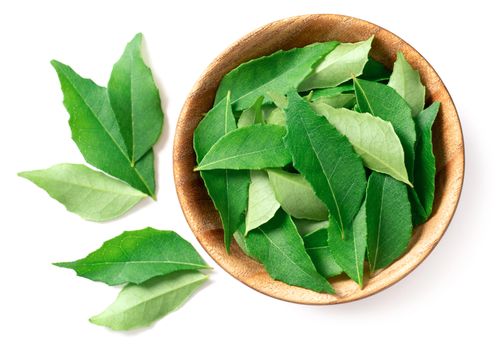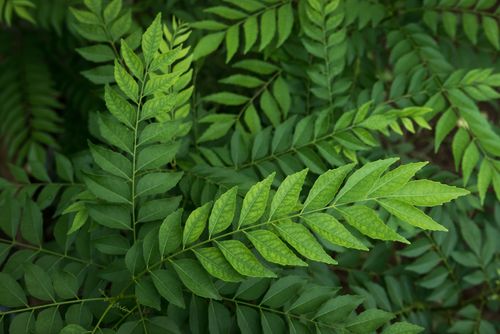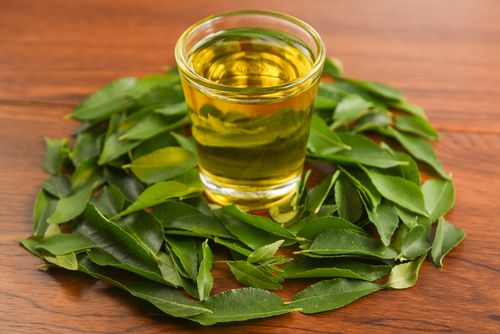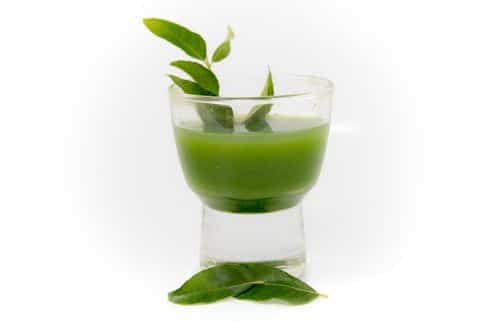Curry Leaves: Nutritional Facts, Benefits, and Recipes HealthifyMe Blog HealthifyMe Blog - The definitive guide to weight loss, fitness and living a healthier life.
Kadi Patta or Meetha Neem in Hindi, Kariveppilai in Tamil, Karivepaaku in Tamil or Karivempu in Malayalam, curry leaves have various health and therapeutic benefits. In India, this herb has been part of traditional Ayurvedic recipes and traditions.
Curry leaves are used in most parts of India. They are known to elevate the flavor of simple curries and vegetables, by mere addition as tadka. While the aroma is enticing, the taste is mildly bitter, flavourful, and edgy. As part of various Indian cuisines, curry leaves are an integral part of Indian food and culture.
Are Curry Powder and Curry Leaves Same?
Curry powder is not the same as curry leaves. While the leaves have a distinct flavor that is unmatched by any other plant or spice. The powder is a spice mix, while the curry leaf is a herb. Curry powder is a broad term that represents Indian cooking principles and the result is a spice mix. Curry powder comprises a variety of spices, like cumin, coriander, cinnamon, cardamom, black pepper, etc.
Ways to Incorporate Curry Leaves in Indian Cuisine
This herb is used in various forms in Indian cuisine. These leaves give flavor, aroma, and unique taste to the food.
1. Tadka or Tempering
Sauté the leaves in ghee, vegetable oil, or coconut oil to bring out their distinctive flavour. Tempering/tadkaa is the term for this cooking procedure. Curry leaves infuse the oil with its fragrance when used in tadkaa and enhance the taste of Indian staples like dal, sabzi, sambhar, curd rice, chutney, etc. Both fresh and dried leaves can be used for tempering purposes. For tadkaa, toss them with additional spices like mustard seeds, cumin seeds, asafoetida, and green chilies in hot oil or ghee and your simple meal will get a facelift.
2. Use it to Garnish
You can directly add curry leaves to your dish to garnish it. You can even use dried leaves for garnishing. The dried version has a faint aroma. It takes longer to infuse flavor into the dish.
Curry leaves are used in making curries, soups, rice dishes, and lentils, both as tadkaa and garnish. When making chutney, include these aromatic leaves. They go very well with coconut, coriander, and mint.
Nutritional Facts of Curry Leaves
- The leaves contain around 108 calories per 100 grams. Carbohydrates, energy, fibre, antioxidants, minerals and vitamins are the key nutrients present in these leaves
- They are high in minerals including calcium, phosphorus, zinc, iron, potassium, and magnesium, which are beneficial to your health
- The presence of essential oils gives curry leaves their distinct flavour
- They contain Vitamin B1, Vitamin B2, Vitamin B3, Vitamin B9, Vitamin C, and Vitamin E
- Vitamin C, Chlorophyll, Zinc, Vitamin E, and Carotene work as antioxidants
- They are also low in fat (0.1 g per 100 g)
Importance in Terms of Nutrition
Fibre – Fibre is beneficial to gut health and important for regular bowel movements.
Protein – They are rich in protein that is the building block of our body.
Calcium – They are high in calcium, which is necessary for strong bones and teeth.
Phosphorus – Phosphorus is found in abundance in these leaves. It helps to cleanse our kidneys and relieve muscle cramps.
Essential oils – They have many essential oils. It has anti-diabetic, anti-inflammation, and anti-bacterial properties. It also aids in the maintenance of healthy hair, skin, and gums.
Where Can You Get Curry Leaves from?
Curry leaves are easily available with every local vegetable vendor. In certain parts of India, where the plants grow abundantly, the vendors do not even charge you if you want a handful. You can even plant your curry leaf plant at home for fresh leaves every time.
How to Store Curry Leaves?
Curry leaves are aromatic when they are fresh. They lose a lot of their flavor when they are dried. The best way to preserve them is to freeze them.
- Pluck the leaves
- Throw away the rotten leaves
- Rinse thoroughly
- Dry the leaves
- Preserve it in a zip-lock bag/airtight container
Choose leaves that are dark green and not brown. Fresh leaves can be kept in the fridge for up to two weeks. The color of frozen leaves may change to a darker green, but it will not affect the taste.
Health Benefits of Curry Leaves
1. Helps reduce cholesterol
Increased cholesterol levels raise the risk of heart diseases. Curry leaves are also good for lowering cholesterol.
2. Antioxidants
They are high in antioxidants. They keep us healthy by flushing out all the harmful toxins from our bodies.
3. Oral health
Curry leaves prevent bacteria from growing inside our mouths. They help to maintain oral hygiene by keeping our gums and teeth strong. Chew 2-3 leaves daily to improve oral health.
4. Good for our eyes
This aromatic herb is high in vitamin A, which is essential for good eyesight. It also prevents the formation of cataracts in the eye.
5. Heals Wounds
Wounds, rashes, boils, and light burns can be cured by applying curry leaf paste. They also aid in the prevention of harmful infections.
6. Prevents Anaemia
They are loaded with iron and folic acid, which helps maintain the body’s red blood cell count.
7. Helps you lose weight
Curry leaves act as detoxifying agents and cleanses our body. Detoxification is one of the most effective ways to get rid of accumulated body fat.
8. Anti-diabetic
This herb is quite good at lowering blood glucose levels. Copper, iron, and zinc are minerals that help to keep glucose levels in check.
9. Anti-bacterial
These fragrant leaves are anti-bacterial and help to fight various infections in the body.
10. Good for the liver
Its antioxidant properties are extremely efficient. When paired with vitamin A and C, it performs more efficiently.
11. Reduces morning sickness
Curry leaves can help pregnant women to get relief during the first trimester by reducing nausea and morning sickness.
12. Reduces stress
The calming aroma of this herb and the essential oils help to soothe your tired nerves, thereby reducing overall stress.
Beauty Benefits of Curry Leaves
For Skin and Hair Care:
- Grind curry leaves, turmeric, and curd to form a paste. Apply to the skin to soothe irritations, rashes, and improve the texture of the skin.
- To increase the quality of your hair, combine the leaves with coconut oil and apply it.
- To strengthen hair roots, use a paste of curry leaves and lemon juice.
Medicinal Uses:
- Curry leaves can treat the following:
- Premature greying
- Acne and pimples
- Gum strengthening
- Tooth cleaning
- Bites of poisonous animals
Using Curry Leaves with a twist
1. Curry Leaf Oil
Curry leaf oil is used in cooking, as well as in medicine and cosmetics.
2. Medicinal Uses:
- Antibiotic
- Antiseptic
- Anti-diabetic
Cosmetic Uses:
- Hair oil – These Leaves are a rich source of proteins, which can reduce hair loss and increase hair growth
- Soaps- They contain antibacterial properties. Therefore, many herbal soaps use these leaves as one of the key ingredients
- Deodorants– These leaves also contain cooling agents. So, during summer using deodorants containing this herb help you to feel refreshed and fragrant
- Creams- In addition, curry leaves have potent antifungal, antiseptic and antibacterial properties. Hence, these leaves are added to many face creams and body lotions
Recipes Using Curry Leaves
1. Curry Leaf Juice Recipe
This juice is amazing to boost your immunity. Simple to make, this juice can improve your health significantly.
Ingredients:
Curry leaves – 2/3 sprigs
Lemon – 1
Ginger – 1-inch
Organic turmeric powder – ¼ tablespoon or 1 slice of fresh turmeric
Gooseberries – 2
A pinch of black salt or Himalayan pink salt
Method:
- Wash all the ingredients
- Make a smooth paste using turmeric, ginger, gooseberries and curry leaves
- To dilute, add more water and filter it
- Toss in few drops of lemon
- Add salt and pepper for taste
2. Curry Leaves Chutney Recipe
Curry leaves are widely used in South India to make chutneys. This chutney recipe goes perfectly with idli, dosa, and even roti. Refrigerate this chutney to use for up to 2 weeks.
Ingredients:
Fresh curry leaves -2 cups
Chana dal – 3 tbsp
Methi seeds – 1 tsp
Black paper – 2 tsp
Cumin seeds – 1 tbsp
Tamarind pulp – 1 tbsp
A pinch of salt
A pinch of Asafoetida (Hing)
Ghee or oil – 1 tbsp
Method:
- Heat oil in a pan. Once hot add Chana dal, Black pepper, Methi seeds, and cumin seeds
- Roast for a minute or two and add curry leaves
- Roast for a couple of minutes and add asafoetida
- Take off the flame and allow it to cool down a little
- Add mixture to a blender jar along with salt and tamarind pulp
- Blend it to a smooth paste and store it in an airtight container
Summary
In India’s western, southern and central parts, almost every other house has a curry leaf plant, yet the herb is so underrated. These leaves are flavourful and highly nutritious. They have plenty of health benefits as well. They might taste bitter initially, but once you develop a taste for them you will love them.
Add curry leaves to your meals for that extra punch. They go perfectly well with Indian meals as tempering. You can even try them with your snacks.
Next time while making popcorn, add a few of these leaves to your oil or ghee for a new and refreshing flavor. When roasting vegetables, toss in a few curry leaves. The fresh fragrances of these aromatic leaves will make your jaw drop.
Sources:
2. pharmeasy.in
Frequently Asked Questions (FAQs)
A. Yes. They are high in vitamin A, which is essential for good eyesight. It also prevents the formation of cataracts in the eye.
A. Yes. Every day one can have 10-15 leaves.
A. No. Not at all. It can grow in any season, requires a medium pot, full sunlight, and moderate watering. So, it is a must-have in your kitchen garden.
A. One should water it once a week in winters and rainy days. When the soil dries out i.e. in summers it requires more water. 2-3 days a week in summer should be adequate. Over-watering curry leaf plants may kill the plants fast so check the soil every time. Allow soil to dry out completely between watering.
A. There are three types of curry leaf trees 1) The regular type grows fast and is tall. The leaves from this plant are commonly sold in grocery stores. 2) The dwarf type does not grow as tall, but it does spread out more. It has light green leaves that are longer than the regular tree’s leaves. Some dwarf curry leaf plants, however, aren’t the ideal plant for culinary use because they have leaves with a less impressive flavor profile. 3) The gamthi/miniature plant type grows thick leaves, but it grows very slowly. This variety has the strongest aroma and best flavor.
The post Curry Leaves: Nutritional Facts, Benefits, and Recipes appeared first on HealthifyMe Blog.
from HealthifyMe Blog https://ift.tt/3iQhAVG




Post a Comment
Post a Comment